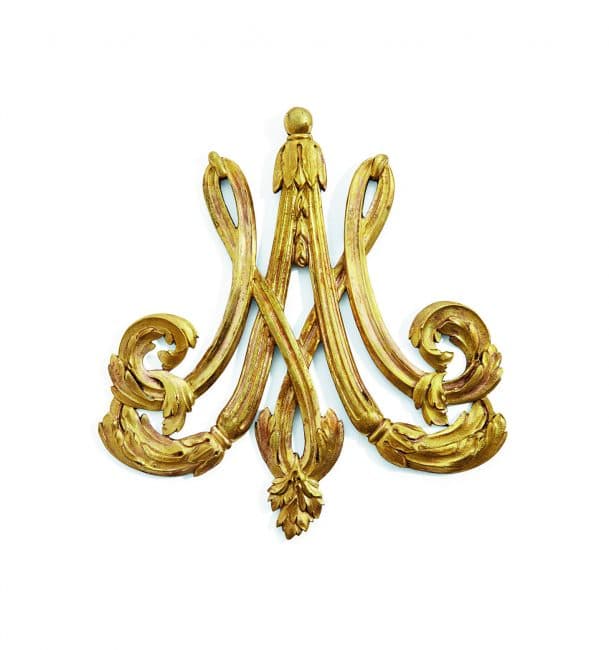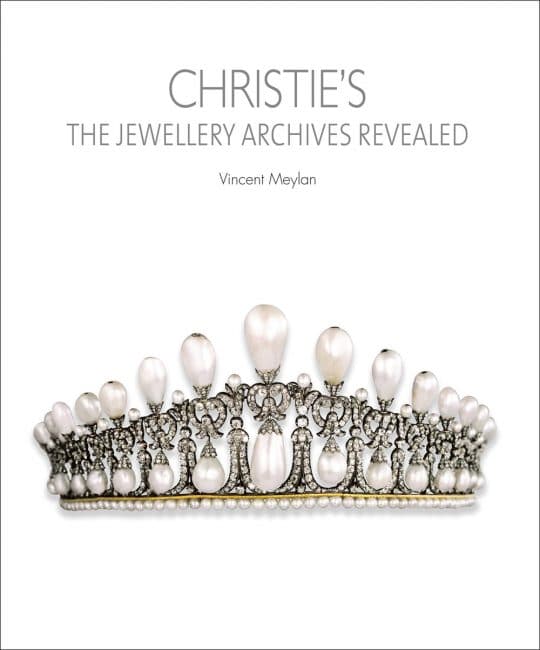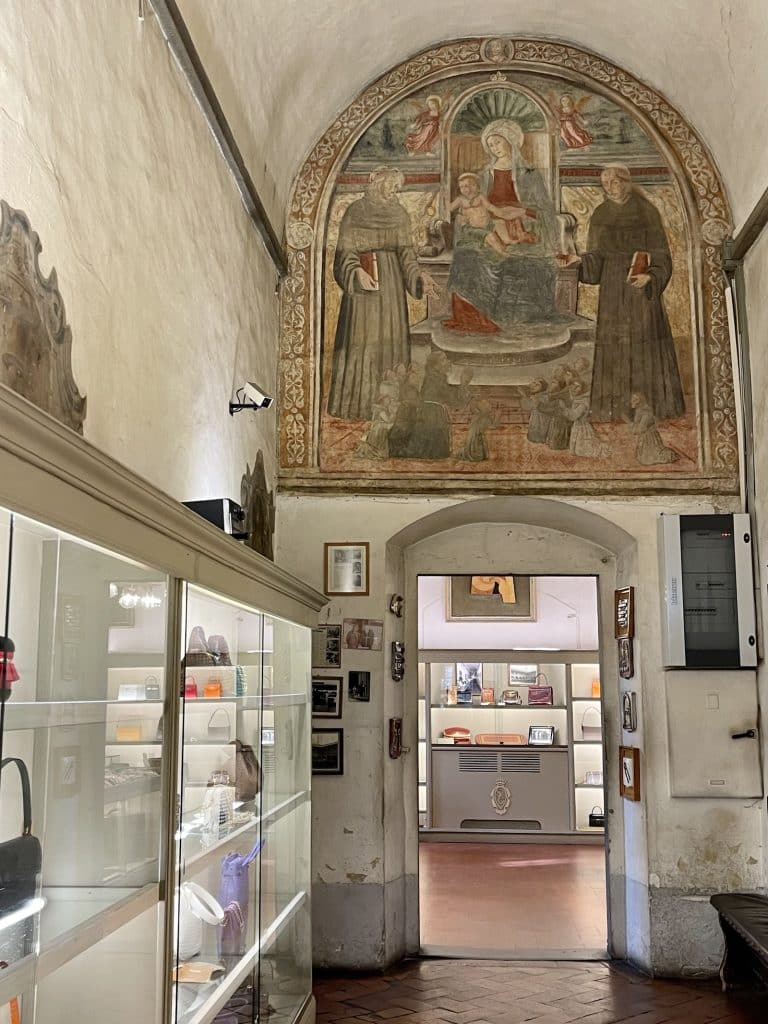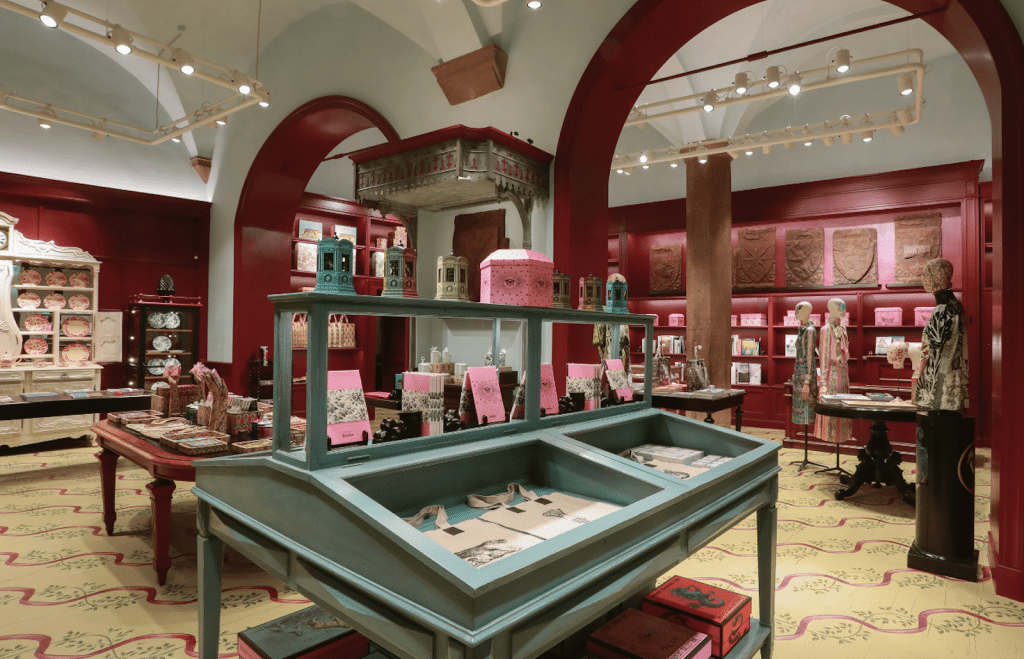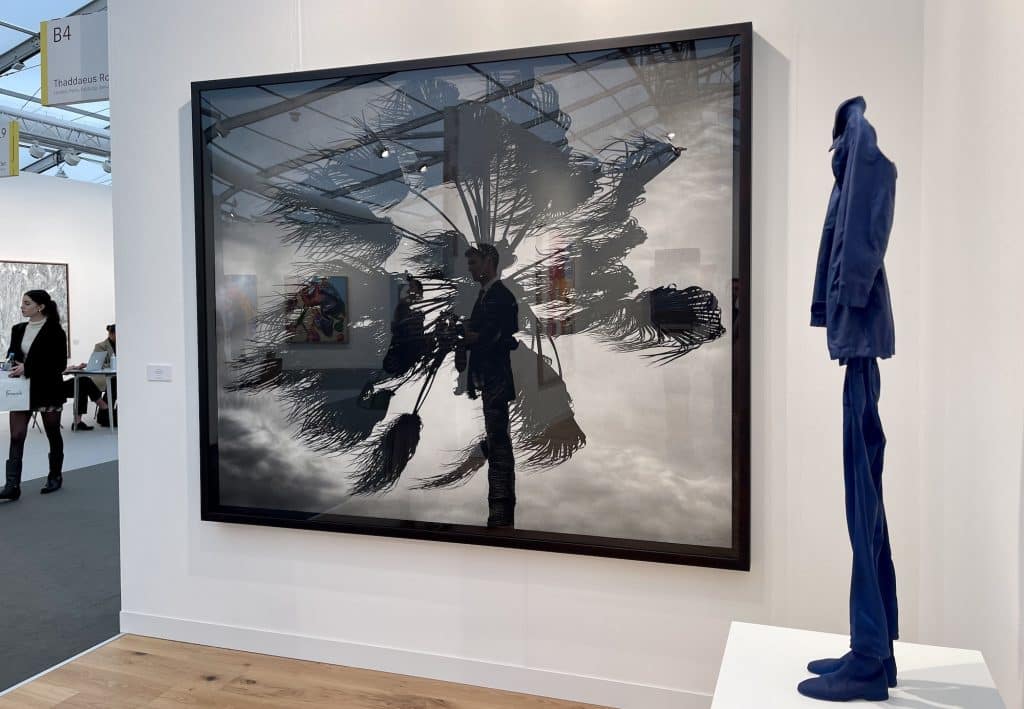Christie’s Jewellery Archives Revealed by ACC Art Books is a glorious glimpse of the world’s greatest jewellery collections, and the stories that lay behind them. For centuries, the collection has been hidden within celebrated auctioneers Christies jewellery archives. This beautiful book is simply a must for all jewellery lovers as it unearths a truly spectacular treasure trove, revealing the mysteries that surround some of the most famous and iconic pieces of jewellery ever known.
From the tragic European Queens: Mary, Queen of Scots, and Marie Antoinette, to Hollywood royalty such as Elizabeth Taylor. More than a hundred original documents from the Christie’s jewellery archives are reproduced in the book alongside hundreds of colour illustrations of the jewels, authored by precious stones specialist, Vincent Meylan.
This is also the story of Christie’s jewellery and its 250 years as the world’s leading auction house.
At the start of the 1780’s, Marie Antoinette had already been labelled with a reputation for frivolity and extravagances as she was lampooned in pamphlets throughout Europe. Her penchant for diamonds was well known. Included in the book, are some fascinating stories detailing how her jewellery was rediscovered, ending up in the possession of Christie’s jewellery archives, long after her fate was sealed at the guillotine in 1793.
A stunning piece which is probably very familiar to readers, is The Cambridge Lover’s Knot tiara which was created at the beginning of the nineteenth century, possibly in Germany, for Princess Augusta of Hesse Cassel, Duchess of Cambridge. A copy of the tiara was made at the request of Queen Mary, who left it in her will to Queen Elizabeth II. Since then, that copy has been worn, without the upright pearls by Diana, Princess of Wales, and more recently, by the present Duchess of Cambridge. It was sold at Christie’s on 13 May 1981.
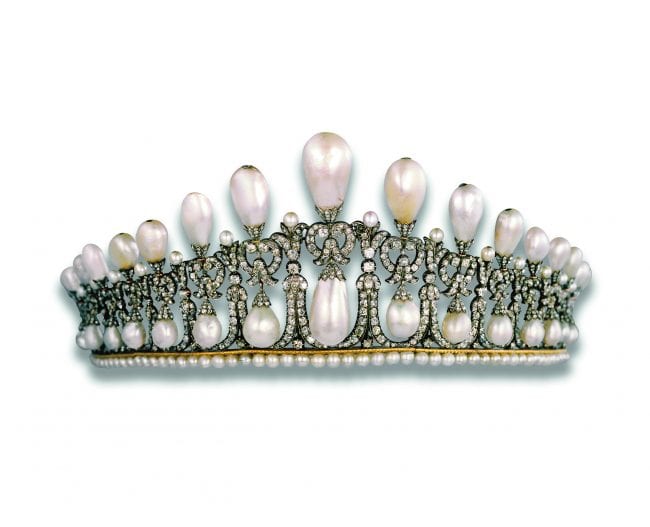
During the sale of HRH Princess Margaret’s jewellery, on 13 June 2006, there was a long queue snaking around the Christie’s building in London; such was the curiosity and fascination for this royal and her private life, strongly reflected in her jewellery, Faberge collection, furniture, books, and paintings. Francois Curiel, chairman of Christie’s Asia-Pacific adds: “We did not sell everything, Viscount Linley and Lady Sarah Chatto, Princess Margaret’s two children, had both reserved a certain number of their favourite items, but it was, all the same, one of the most important sales that we had been offered for several years. I have often been asked which piece of jewellery, out of all the pieces we have sold, is my favourite. It is always a delicate question to answer, but I think the riviera of diamonds belonging to Princess Margaret is one of the most elegant I have ever seen. It had belonged to her grandmother, Queen Mary. It was simple yet sumptuous, entirely made up of large cushion-cut diamonds, very white and very pure. It was estimated at £200,000 to £300,000.It finally sold for £993,000. Of course, the price reflected the quality of the stones, but also its royal provenance”.
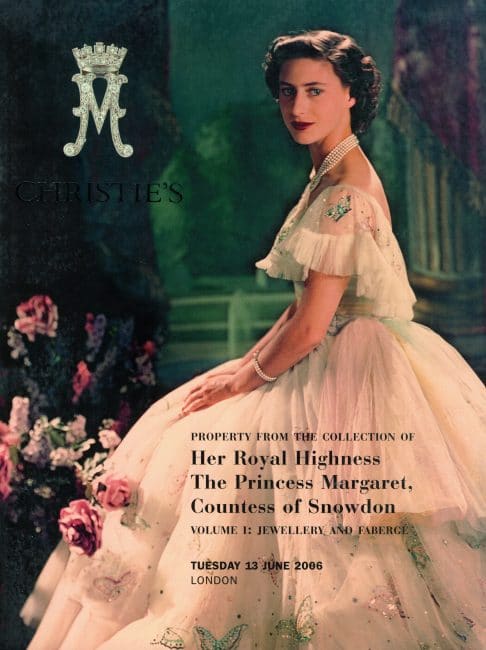
The “Poltimore Tiara” worn by Princess Margaret on her wedding day, 6 May 1960.
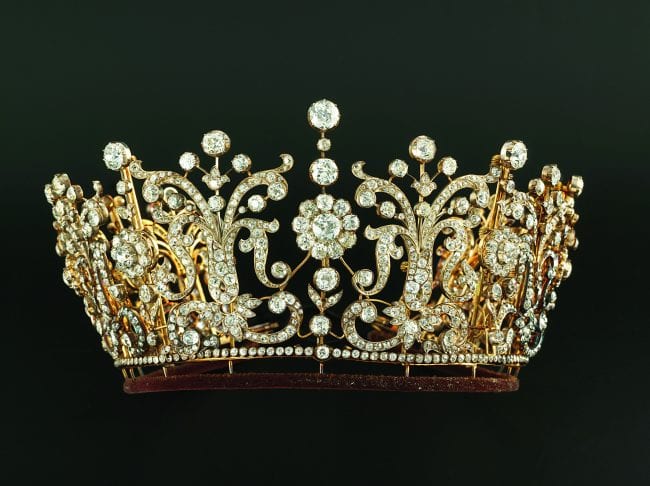
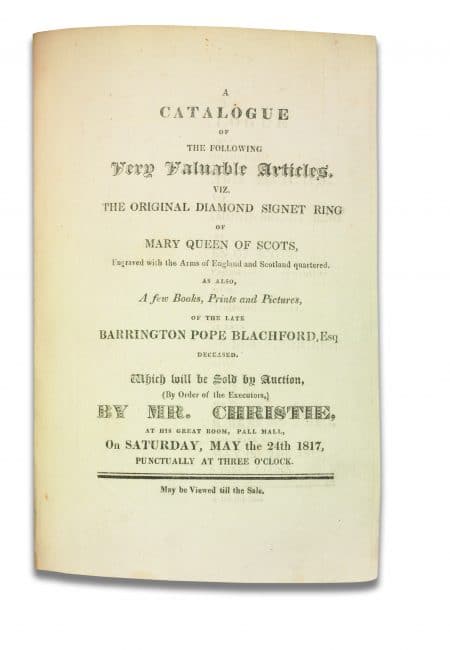
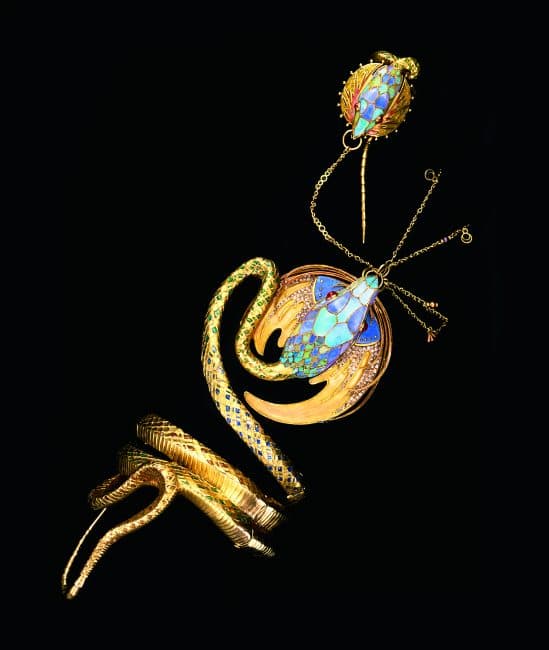
The sale of Elizabeth Taylor’s jewellery collection at Christie’s jewellery in New York, December 2011, was quite literally the sale of the century resulting in a final total of more than $130 million, with some items being sold for more than fifty times their estimate. Everything was sold, including the fabulous emeralds bought at Bulgari in Rome by Richard Burton. As were the rubies mounted by Cartier and given to Elizabeth Taylor by Mike Todd, her third husband.
Not to forget La Peregrina, the historic pearl that had belonged to the kings of Spain and which was remounted by Cartier in the 1960s, and the Krupp diamond, a solitaire of 33 carats. Francois Curiel explained: “The success of this sale was not due to the stature of Elizabeth Taylor. It was due, purely, to the quality of the precious stones. Most of the pieces were of exceptional quality. Elizabeth Taylor was, of course, a star like no other; but she was first and foremost woman with the best eye for jewellery.’”
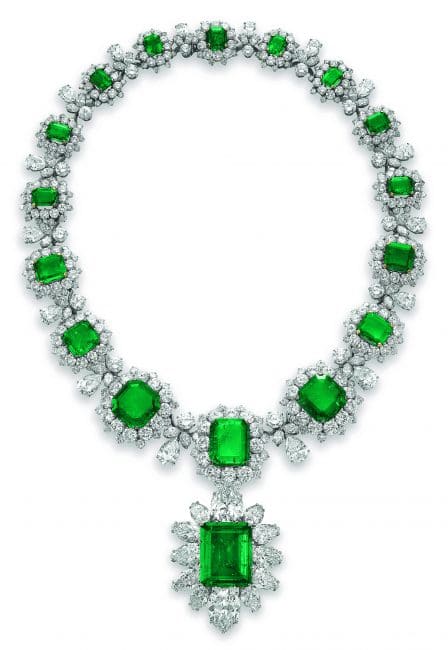
Below, the stunning tiara from the Bagration spinel and diamond parure, was created in France at the beginning of the nineteenth century, possibly by Jean Baptiste Fossil. Princess Catherine Bagration was one of the most adventurous women of her time. Born in Russia, she was niece to Prince Potemkine, Catherine the Great’s famous lover. Extremely rich, she led a very free life. and was known as the “Naked Angel” all around Europe. She died in Venice in 1857.
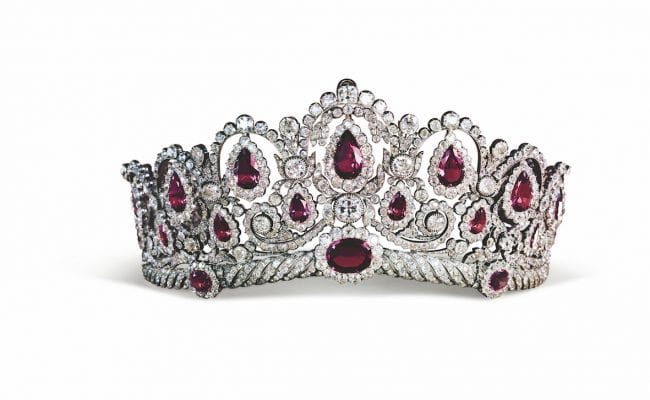
Christies the Jewellery Archives Revealed brings to life the drama and intrigue of each unique sale. The first auction of jewellery from the British Royal Family took place at Christie’s in 1773. Later on, in the wake of revolution, the Crown Jewels of France, Russia, Bavaria, Serbia, Egypt, India and Spain were all sold at the auction house. As Francois Curiel sums up: “Jewels play numerous and diverse roles in our lives: they can serve as measurements of wealth, icons of power, momentos of love, the spoils of war, objects of desire and, even, emergency cash. But, above all, are the embodiment of beauty. They have been coveted by the most memorable names in history, heroes and villains, famous lovers, glamorous stars, distinguished families, and commanding dynasties.”
To purchase a copy of Christie’s the Jewellery Archives Revealed please visit here
Find out more about ACC Art Books please visit here
More about Christie’s Jewellery please visit here
See also The Elizabeth Taylor Jewellery Sale Preview At Christie’s London
For our curated recommendations for Art, Culture, Design and Architecture books visit the CELLOPHANELAND* bookstore




